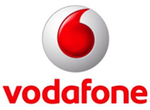 My week Monday 17 to Sunday 23 June 2013 was marked by the Winter Solstice, as (almost) illustrated above, a certain amount of radio silence, and much sound.
My week Monday 17 to Sunday 23 June 2013 was marked by the Winter Solstice, as (almost) illustrated above, a certain amount of radio silence, and much sound.
The Winter Solstice was something that, in the past, I’d celebrate regularly in a private ceremony similar to Sunreturn. I’d sometimes write reflective pieces about that, as I did in 2005, 2008 and 2009. And yet nothing along those lines has appeared for four years. I think that’s significant, and that will now change — although I won’t elaborate on that.
Nor will I elaborate on the fact that I haven’t uttered a word on Twitter in more than a week, and generally left messages pile up unless they really were urgent, except to note that sometimes a little quiet is beneficial. Most of the world could handle a bit of STFU now and then, actually. Maybe I’ll elaborate on that little observation at some point. Or not.
Actually, I’ve written previously about how (faux) urgency in poisonous — and in looking up the link to that post just then, I discovered this observation about Kevin Rudd’s management style. It’s not just Rudd who needs to think about that stuff.
And the sound? You’ll find out at 2132 AEST tonight. There is a clue: “CN”.
Articles
Media Appearances
None.
Corporate Largesse
- On Wednesday I attended a media roundtable hosted by Websense at Establishment in Sydney. A rather elaborate morning tea was served.
- Also on Wednesday I attended the launch of IBM’s Truth Behind the Trends whitepaper at Arras Restaurant in Sydney, which doesn’t seem to have its own website. Still, I photographed the menu, the butter and my entrée, but not the main course. You’ll cope.
- Since Saturday 8 June I’ve been using Vodafone’s new 4G network while in Sydney, and their existing 3G network while in the Blue Mountains, with a Samsung Galaxy S4 handset that they’ve loaned me. I’ll be writing about my experiences some time this coming week.
The Week Ahead
I’ll simply note that there’s plenty to write, and plenty to do in this last week of the financial year. And then there’s a new financial year, which brings possibilities…
There will be tweets and suchlike starting again from 1100 AEST today.
[Photo: Pas de Deux, a cloud and a crane photographed shortly after the moment of Winter Solstice in Sydney, Australia on Friday afternoon. Sadly the contrast is pretty bad, ‘cos it was just a quick snapshot and I didn’t have time to play with the exposure.]
![]() Third time’s the charm, right? My third radio spot on The Great SIM Heist was for 1395 FIVEaa in Adelaide on Wednesday afternoon.
Third time’s the charm, right? My third radio spot on The Great SIM Heist was for 1395 FIVEaa in Adelaide on Wednesday afternoon.
 On Friday, The Intercept published some astounding claims under the headline
On Friday, The Intercept published some astounding claims under the headline  For the last few week’s I’ve been using Vodafone Australia’s new 4G network, and I must say it ain’t bad at all. Here’s quite a long post about what I’ve experienced.
For the last few week’s I’ve been using Vodafone Australia’s new 4G network, and I must say it ain’t bad at all. Here’s quite a long post about what I’ve experienced.